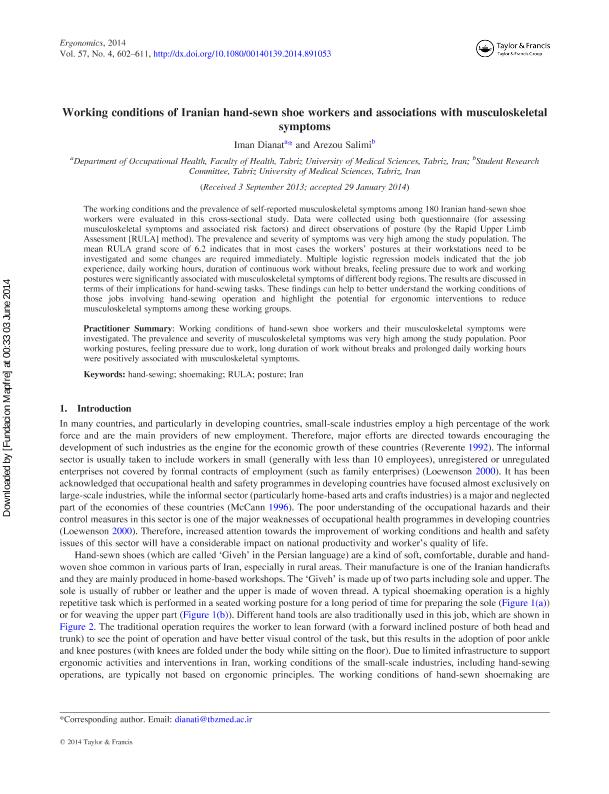Working conditions of Iranian hand-sewn shoe workers and associations with musculoskeletal symptoms

Contenido multimedia no disponible por derechos de autor o por acceso restringido. Contacte con la institución para más información.
| Tag | 1 | 2 | Valor |
|---|---|---|---|
| LDR | 00000cab a2200000 4500 | ||
| 001 | MAP20140020065 | ||
| 003 | MAP | ||
| 005 | 20140604163717.0 | ||
| 008 | 140603e20140407esp|||p |0|||b|spa d | ||
| 040 | $aMAP$bspa$dMAP | ||
| 084 | $a875 | ||
| 100 | $0MAPA20100066171$aDianat, Iman | ||
| 245 | 1 | 0 | $aWorking conditions of Iranian hand-sewn shoe workers and associations with musculoskeletal symptoms$cIman Dianat, Arezou Salimi |
| 520 | $aThe working conditions and the prevalence of self-reported musculoskeletal symptoms among 180 Iranian hand-sewn shoe workers were evaluated in this cross-sectional study. Data were collected using both questionnaire (for assessing musculoskeletal symptoms and associated risk factors) and direct observations of posture (by the Rapid Upper Limb Assessment [RULA] method). The prevalence and severity of symptoms was very high among the study population. The mean RULA grand score of 6.2 indicates that in most cases the workers' postures at their workstations need to be investigated and some changes are required immediately. Multiple logistic regression models indicated that the job experience, daily working hours, duration of continuous work without breaks, feeling pressure due to work and working postures were significantly associated with musculoskeletal symptoms of different body regions. The results are discussed in terms of their implications for hand-sewing tasks. These findings can help to better understand the working conditions of those jobs involving hand-sewing operation and highlight the potential for ergonomic interventions to reduce musculoskeletal symptoms among these working groups. | ||
| 773 | 0 | $wMAP20100019818$tErgonomics : the international journal of research and practice in human factors and ergonomics$dOxon [United Kingdom] : Taylor & Francis, 2010-$x0014-0139$g07/04/2014 Volumen 57 Número 4 - abril 2014 |

